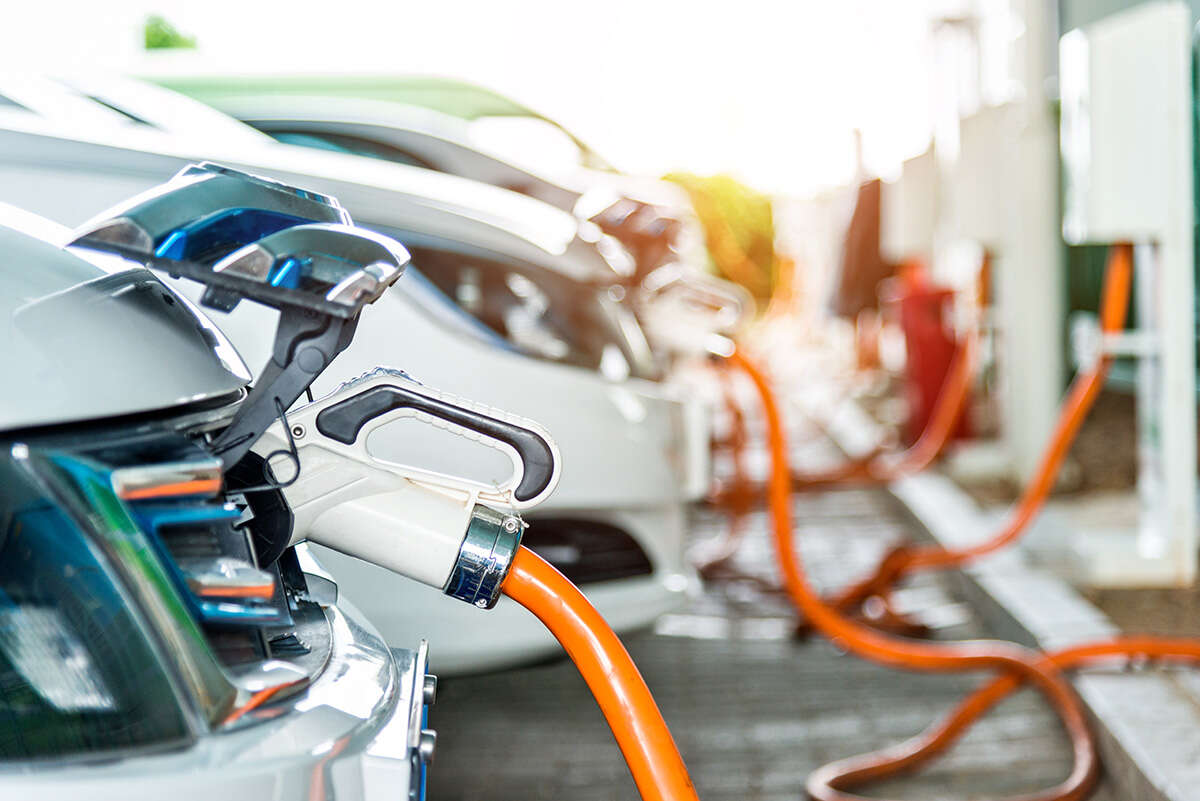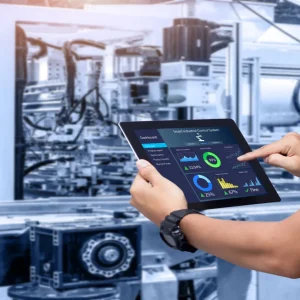
Change is happening fast in the fleet industry and the future is electric. As electric vehicle (EV) technology improves at a staggering rate, the sector is embarking upon radically reforming its vehicle mix, the energy used and how it is purchased.
More than 100 of the world’s largest businesses have now signed up to the Climate Group’s EV100 campaign, making a global commitment to ensure their fleets are electric by the end of the decade. This amounts to a staggering 4.8 million vehicles and the installation of huge numbers of charging points worldwide to support them. British Gas, which runs one of the largest fleets in the UK with more than 12,000 vehicles on the road, will have a fully electric fleet by 2025.

More than 100 of the world’s largest businesses have now signed up to the Climate Group’s EV100 campaign, making a global commitment to ensure their fleets are electric by the end of the decade. (Photo by baona/iStock)
One big challenge, however, will be the availability and visibility of charging infrastructure to support the move away from petrol and diesel. With Arval Mobility Observatory reporting that more than 60% of fleets expect to have implemented an alternative energy mix by 2023, energy retailers – traditionally the oil and gas majors operating vast networks of fuelling stations – need to adapt quickly.
“If you’re running a big group of vehicles, whether it’s heavy goods vehicles, a plumbing company with a dozen vans or a national postal service, you don’t want the drivers having to use their personal credit card or need to submit expenses for fuel” says Graham Chedzoy, solution director at CGI, who has worked with oil and gas clients in the fleet services space for over 20 years. “So, you give them a fuel card to fuel the vehicle.
“Those cards create the most loyal customers because they offer really good pricing on fuel, but over the years it has developed into something more than just fuel. CGI runs a full suite of systems for the companies that supply the fuel cards – the billing system, pricing engines, authorisation modules, the website, customer management systems, and accounting systems – the transition to electric is clearly the biggest change that industry has seen.”
Building a future beyond fuel
The relatively low price of electricity means that an EV fleet promises potentially significant cost savings compared to diesel or petrol, but the switch presents a challenge to oil and gas retailers whose revenue growth, in simple terms, depends on selling more fuel at the petrol station forecourt.
“If you’re running a fleet and spending millions of pounds on diesel a year and you have the option to switch to electricity going forward, you will find the cost per mile will be a lot less,” says Chedzoy. “The fuel retailers and fuel card suppliers have had reliable revenue growth over the years by selling more and more fuel, but now they have to think about how to serve these new customers with their new vehicles differently in a more competitive environment.
“Oil and gas companies had a really good market and a captive audience but there is no differentiation between electrons and you can get them pretty much anywhere, so the role of fuel retailers has got to change. Going forward, the competition is the electricity companies, the vehicle manufacturers, the supermarkets and the train station car parks, anywhere that people park a vehicle and can plug in. So, what we are looking at with our customers is how to keep and build that customer relationship.”
Chedzoy is not suggesting it is time to shutter fuel stations. Instead, he proposes that the traditional fuel card suppliers leverage their existing relationships with loyal customers by becoming “super-aggregators” – partners capable of providing not only fuel and EV networks, but a host of other services to help fleet operators that are looking to simplify and consolidate how they purchase the products and services they need to run their businesses.
Companies that have, hitherto, provided fuel cards are well placed to meet their changing customer needs by providing mobility, insurance, commercial energy supply, financial services, telematics and other services in one bundle. The challenge is to find the right mix of services and a delivery mechanism that is both easy to use and cost-effective.
CGI’s solution is the B2B Fleet marketplace, which bundles together a range of solutions to help fuel card issuers move from a limited set of services to a more diverse range through a network of partners and suppliers.
“It is effectively a service to let our customers offer their customers a much broader range of services, because as well as buying energy for a fleet they are leasing and insuring vehicles, paying drivers and doing a host of other things,” says Chedzoy. “It’s been done, in a somewhat limited way, for years with road tolls, ferry tickets, car wash and parking. As well as offering on-the-road services, there is scope to upsell to the fleets underlying businesses who may also buy lubricants, energy, networking or financial services”
The goal is to provide a technology framework that enables energy companies to onboard their own and partner services in a straightforward way by aggregating at a high level of connectivity. This can apply not only to its traditional customers in the oil and gas sector, but also other payment card providers, vehicle manufacturers, electricity companies – any provider of services to fleet operators.
“This is where I think the battleground is, with lots of people vying to take on the challenge, and our model will work with everyone,” says Chedzoy. “That’s the beauty of it. Although we have a lot of experience in the more traditional hydrocarbon fuels sector, actually what we can offer is that aggregation layer.”
Change is happening and, as always, it brings in its wake both challenges and opportunities. What fleet operators require from their fuel partners is changing dramatically. Only those with a framework in place to deliver new solutions and services efficiently will remain in a position to retain and build longstanding commercial relationships.






